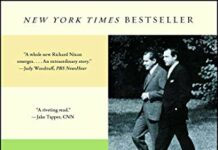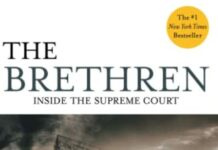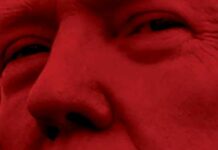
Ebook Info
- Published: 2005
- Number of pages: 608 pages
- Format: PDF
- File Size: 2.68 MB
- Authors: Bob Woodward
Description
From Bob Woodward, legendary investigative reporter, Veil is the story of the covert wars that were waged by the CIA across Central America, Iran and Libya in a secretive atmosphere and became the centerpieces and eventual time bombs of American foreign policy in the 1980s.With unprecedented access to the government’s highest-level operators, Woodward recounts one of the most clandestine operations in our nation’s history.
User’s Reviews
Editorial Reviews: Review “Woodward has established himself as the best reporter of our time. He may be the best reporter of all time.” — Bob Schieffer,CBS News Face the Nation”Bob Woodward, the master chronicler of Washington’s deepest secrets, has produced an investigative record of the CIA’s turbulent years under the late William Casey….Veil plows more new ground than a dozen tractors in Iowa.” — U.S. News & World Report”Veil lays bare, in a way that no reportage has done before, the power struggle between contending factions — both inside and outside the CIA — for control over the nation’s foreign intelligence apparatus….” — The Washington Times”To read Veil is to be astonished at the access Woodward achieved….The reader is invited to understand Casey. The author dared open himself to Casey’s charm, to Casey’s rationale….” — New York Daily News”Fifteen years after he unraveled Watergate as little more than a policebeat reporter, Woodward has lost none of his edge as one of the finest journalistic investigators of our time….Woodward has succeeded brilliantly in cracking state secrets….” — Los Angeles Times Book Review About the Author Bob Woodward is an associate editor at The Washington Post where he has worked for 50 years. He has shared in two Pulitzer Prizes, one for his Watergate coverage and the other for coverage of the 9/11 terrorist attacks. He has authored 20 national bestselling books, 14 of which have been #1 New York Times bestsellers.
Reviews from Amazon users which were colected at the time this book was published on the website:
⭐Woodward’s story of Casey’s years at the helm of U.S. state terrorism centers around Casey and his British-bred, WWII-honed perspective used to justify government covert actions that include torture, disappearance, and death. We learn that America did not begin her slide down the slope to Nazi Germany with the invasions of Afghanistan and Iraq in the Twenty-First Century. It began when Hitler’s faults began to take revenge on the Allies through the creation of the OSS in London, predecessor to CIA. Under Reagan’s two terms as President with Casey at the helm of CIA, U.S. state terrorism ran rampant in its aim to establish a system of Anglo/U.S.-sponsored authoritarian states.Woodward is interesting to read because he provides information along with disinformation, twisted around more information and more disinformation, so that unraveling it becomes a challenge. Beginning on page 6, Woodward lets us know that he intends to take the uninitiated for an Orwellian ride. Stansfield Turner was Director of the CIA when Jimmy Carter was President, but either the CIA did not keep him completely informed of its covert activities; or Turner did know – but Woodward portrayed him as not knowing in the interest of disinformation. According to Woodward, Turner wanted “to funnel covert money or assistance to some groups or individuals inside” Cuba, Libya, and Iran “to oust three leaders who were troublesome to U.S. interests – Cuba’s leader Fidel Castro, Iran’s leader Ayatollah Khomeini, and Libya’s Muammar [sic] Qaddafi. The response from the DDO was: No, . . . Turner had been surprised at the depth of their reluctance” (p6).The fact is that all three leaders were put into office by CIA and received subsequent CIA covert support to maintain their regimes. The Le Monde reported in 1979 that Khomeini had been stashed in France as part of a CIA Number Two back-up plan that, in the event that Shah Pahlevi and his SAVAK lost control in Iran, envisioned the CIA’s Ayatollah Khomeini telling the Iranian people what they wanted to hear and duping them with Islamic rhetoric. And that is precisely what happened after the Shah fled Iran in October of 1979. Two weeks later the CIA personnel in Teheran were predictably taken hostage after CIA intentionally leaked the false rumor that they were going to reinstall the Shah. The hostage-takers wanted a swap – to exchange the CIA personnel for the Shah so he could be executed for his heinous crimes and Iranian fears could be put to rest that the Shah would wreak terror again. CIA subsequently sent Khomeini to do a Ross Perot on the Iranian people – to drug them with words they longed to hear, words of peace through submission to God. The CIA’s Ayatollah duped many with his Islamic rhetoric, but the socialists could not be fooled – he later killed tens of thousands of them and caused a resulting diaspora of Iranian socialists around the globe. Once secure in his new position as Caesar in the new Iranian Roman-style republic engineered by CIA, the Ayatollah’s Iranian F4 fighters were subsequently provided covert U.S. AWAC support against Iraqis MIGs during the Iran-Iraq War, Iranian surveillance stations were maintained along the Soviet border, and oil flowed from Iran to Europe and Japan. Despite the camouflaging anti-U.S. rhetoric from Khomeini (“The U.S. is an evil `Shaytaan'”), nothing changed in terms of U.S. strategic interests. The average man would do well to remember Tom Paine’s truism – “war is the gambling table of governments, citizens the dupes of the game”.Since CIA hijacked the Iranian coup and installed Khomeini, how could a Director of CIA not know what was really happening in Iran? Either Turner did know and Woodward did not want his readers to know what Turner knew; or Turner didn’t know. The idea of Turner not knowing is absurd considering the extent that CIA was complicit, but this is the disinformation that Woodward wants his readers to believe. Woodward writes: “When the Shah of Iran came to the United States for medical treatment in October 1979, two weeks before the American hostages were taken in Iran, . . . Turner realized . . . that he was isolated both from his own agency and from the President he served” (p8). The fact is, according to the Le Monde in 1979, that Iranians reacted predictably to intentionally leaked CIA reports that CIA was going to reinstall the Shah, and predictably the Iranians grabbed the CIA personnel at the U.S. Embassy in Teheran in order to later do a swap for the Shah – that way they could lock the Shah away and not worry about him reviving his CIA-maintained Hitlerite SAVAK regime. Woodward would have us believe that Turner is oblivious to what his CIA is doing or what Le Monde is saying about his CIA.Woodward’s disinformation quickly mounds up: “He and his CIA had studiously misread Khomeini as a benign, senile cleric, and now he held the United States hostage”(p11). The reality was that CIA had orchestrated the realization of the hostage crisis so that their number two man – Ayatollah Khomeini, could take over where the Shah left off by singing a different tune.Having established himself as a disinformationist and probably a wordpusher on the CIA payroll in addition to his job at the Washington Post, Woodward’s story progresses toward its main character William J. Casey. Casey came from the OSS – “the old-hand, old-boy network” that began in London, England during World War II. “These men were the operators, the inner agency, the band of brothers . . . the dedicated secretive operatives who did the dirty work . . . a club that didn’t meet”(p4). Woodward explains “They had been trained by the British, and CIA traditions were British traditions”. Woodward says Casey “sat in London headquarters creating a spy network” (p37). American-powered British empire was the result, although the British have remained discreetly behind the scenes (See Nicolas John Cull’s “Selling War”).After WWII, Casey made one unsuccessful stab at running for election to public office when he sought the Republican Party nomination to be their Long Island candidate for Congress in 1966 and they chose someone else. Afterward, “Casey returned to behind the scenes, where . . . many . . . thought he belonged” (p19). By early 1980, he became Ronald Reagan’s campaign manager when Casey was “writing a book on the OSS” (p17).Ronald Reagan won the election and Carter lost his bid for reelection. Stansfield Turner was hoping Reagan would keep him on as CIA chief, but that was not to be. Woodward relates an interesting aside about a warning from French intelligence chief Colonel Alexandre de Marenches that was given to President-Elect Ronald Reagan after he and Vice President-Elect George Bush won the election and waited for Carter to leave the White House – “`Don’t trust the CIA'”(p22). Woodward further relates “Reagan repeated Marenches’ warning – `Don’t trust the CIA’ – to George Bush, who had been CIA chief in 1976-77. Bush thought it was hogwash, but all the same it obviously left a deep impression on Reagan” (p22). Reagan then asked Casey to head the CIA and he later agreed, but Reagan was shot anyway weeks later by the son of Bush’s close friend in a deadly assassination attempt that was thwarted by the surgical prowess of Dr Rodman from Alliance, Ohio. Subsequently, Vice-President George Bush sat in the driver’s seat at the White House while Reagan and his “voodoo economic” was on the mend. Bush, as former director of CIA, and Casey, as the current director of CIA, remained true to their OSS roots and British traditions.On page 55, Woodward says that CIA chief Turner, prior to Casey, believed the Soviet economy was in trouble and that any alleged military superiority was false. If what Woodward says about Turner is accurate, then I can say that Turner was correct in thinking that the Soviets were in trouble because in 1980 the Soviets were certainly in trouble from my viewpoint on Shemya Island. That year I learned that Reagan’s Red Scare was largely balderdash. He was scaring U.S. taxpayers into giving up large amounts of cash to his bomb-making corporatist friends to defend ourselves from a largely imagined threat. On page 56, Woodward says “That meant that the Soviet advantage was not real”.Woodward’s story carries on for over 500 more pages and is chock full of information and more disinformation. My review can’t possibly due justice to it all. Read the book and discern for yourself whether Bob Woodward is a CIA wordpusher or not.
⭐I’m not the biggest Bob Woodward fan but if you enjoy military history then this book is a must.
⭐The Veil by Bob Woodward is a book that both recounts the CIA’s covert activities during the six year tenure of William Casey and serves as a portrait of the man who believed that the CIA had been neutered by the Carter Administration and numerous Congressional inquiries into agency activities particularly after Watergate. Casey is almost as important to the story as any action the CIA undertook. He’s an old covert operations man dating back to WW2 who believes that taking covert action off the table deprives the United States of a vital strategic tool in an increasingly dangerous world where the Soviet Union has seemingly made numerous gains throughout Africa, Latin America, and the Middle East.That’s the mindset and mentality the reader must understand as they read The Veil and the series of covert actions that Casey’s CIA undertook or considered in places as diverse as Iran, Afghanistan Nicaragua, Lebanon, Grenada, and Libya among others. Casey’s America under threat…have to look strong worldview leads to him green lighting more and more risky operations, which ultimately gave us Iran Contra, but the CIA was not a policy afterthought anymore.The Veil is both an intriguing fly on the wall account of covert action and presidential decision-making and a cautionary tale of what happens when a person’s beliefs are held so strongly that they become blinded to the consequences of action.
⭐This is the history of the CIA in the 1980s under Bill Casey as told by a reporter who relies on his awesome reputation as a friend of Deep Throat (1970s Watergate Nixon scandals as revealed to 2 intrepid but not always the brightest of daring young reporters looking to make their reputations in the city which is the leader of the Free World. The profile of Casey is priceless if a bit superficial — he was a bit more complicated, IMHO, than portrayed here, but the stories about are legendary and the characterizations true. He lived and acted as if he followed a separate and special set of standards of behavior. Congress, critics, anyone to the left of Atill the Hun were useless, weak, or worse, principled. Can’t have that in a democracy, can we? Still, this version of the CIA and Casey is based on rumor, innuendo, and a few facts. I am sure Mr Woodward accurately depicted may of the actions taken and recorded faithfully his conversations with the late Director of Central Intelligence, but it is a short-hand and episodic series of stories with the only constant theme being “according to the Washington Post.” It tells us more about the WAPO’s defense of its right to publish than it tells us about Casey the individual. Having been at CIA during this turbulent era and as familiar as someone could be who was not read into the super secret compartments on the issues under discussion, I was disappointed with the sketchy coverage and shallow analysis given these important issues of law and unethical behavior on the part of mid and senior level USG security officials and advisers. If you are interested in the issue of law and ethics under the Reagan Administration, the CIA under Casey, and the real story behind Iran Contra and terrorism in the 1980s, including the grim story of the hostages in Lebanon, then this is not the book to read.
⭐As usual, Bob Woodward’s books are surprisingly well documented and presented in an apparently purely factual way. Inevitably, his presentation of things is determined by the information he had access to, which is quite a lot.Altogether, the book is informative and it gives a certain insight in the way things really happen. A sound of reality, as in all his books, quite different from the usually superficial journalistic style of books written by journalists.
⭐Detailed read. A bit heavy going. Took three attempts to complete but that’s more about me than this fascinating insight.
⭐Wanted more. Bought The Agency. Still reading it. Very detailed.
⭐Got it for my husband as a gift and he really enjoyed it. Book is very interesting and in great condition
⭐Real eye opener.
Keywords
Free Download Veil: The Secret Wars of the CIA, 1981-1987 in PDF format
Veil: The Secret Wars of the CIA, 1981-1987 PDF Free Download
Download Veil: The Secret Wars of the CIA, 1981-1987 2005 PDF Free
Veil: The Secret Wars of the CIA, 1981-1987 2005 PDF Free Download
Download Veil: The Secret Wars of the CIA, 1981-1987 PDF
Free Download Ebook Veil: The Secret Wars of the CIA, 1981-1987





